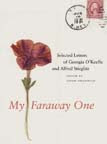 Back in January (when winter promised only to be bone-chillingly cold and the idea of snow seemed a distant threat), the gentleman and I ventured over to the Soldiers' Home in upper northwest Washington to investigate the newly-restored Lincoln Summer Cottage. As luck would have it we were the only two souls hardy enough to brave the frigid temperatures, and so were treated to a private tour.
Back in January (when winter promised only to be bone-chillingly cold and the idea of snow seemed a distant threat), the gentleman and I ventured over to the Soldiers' Home in upper northwest Washington to investigate the newly-restored Lincoln Summer Cottage. As luck would have it we were the only two souls hardy enough to brave the frigid temperatures, and so were treated to a private tour.The Gothic-Revival style cottage was built in 1842 for George Riggs (of Riggs National Bank). Modest even by 19th-century standards, there is little to distinguish the house architecturally ~ its significance marked instead by its place in history. The real story begins in 1851, when the Riggs estate was purchased by the Federal government, the land intended as the site for a new soldiers' retirement home, and the cottage itself to serve as a presidential retreat (akin to Camp David today). While President Buchanan used it infrequently, Lincoln made it his sanctuary. Perched high on a hill overlooking the city, the house provided the president a place to escape the summer heat of Washington, and the frenetic pace of its society. It was there that Lincoln made many important, gut-wrenching decisions regarding the war, and wrote most of the Emancipation Proclamation. Following Lincoln's assassination, Presidents Hayes and Arthur occupied the house, but none to the degree of their predecessor.
Over the years, the cottage was used by the Soldiers' Home for various purposes, and evidence of its presidential occupants was slowly lost to time. Wisely, when the National Trust for Historic Preservation began restorations in 2000, it was decided not to fully furnish the house as there are few records to indicate how the interiors would have looked. But somehow in its sparseness, the house seems full of history.



















6 comments:
What an interesting subdued colour on the stair balustrade and the woodwork.
I am always slightly conflicted about the curatorial rigour of leaving things out if they cannot be proven to have been there. On the one hand one understands and applauds the honesty of it. On the other hand it seems a missed opportunity to show how it could have been.
Emile ~ I might tend to agree with you, but in this case I think it works beautifully. There is so little evidence of anything beyond the sitting room window treatments and the simple sisal rugs throughout, that anything else would be pure conjecture. The one important piece of furniture thought to have been at the house (Lincoln's desk) is now in the Lincoln Bedroom at the White House. The Trust did spent some $20,000 to have it reproduced. The repro now sits in an upstairs bedroom...a stark reminder of the turmoil and isolation Lincoln must have felt as he crafted a document that would surely break apart the union and forever change the course of US history.
I haven't been out to the cottage since it was restored. About five years ago I worked on a project on that Armed Forces Retirement Home campus, and was amazed at what a beautiful setting it is. So nice that the general public can now get inside the gates--at least to see the Lincoln Cottage and catch a glimpse of the rest.
Lovely post and there's nothing better than a private tour! I've heard of this cottage but not really seen many pictures, so thanks for the update. I like the idea of the house being almost bare and we get to mentally fill it. Lincoln is such a huge presence, you don't need much else!
Thomas ~ I was amazed by how beautiful the setting is. And the architecture! They are very strict about where you can walk, so one really can't explore. But, such a treat to get even a glimpse.
Ms. Wis. ~ You put it perfectly. There really isn't a need for anything else.
I love it when historic houses use the shutters - I like the play of open and closed shuttered windows on a facade. KDM
Post a Comment